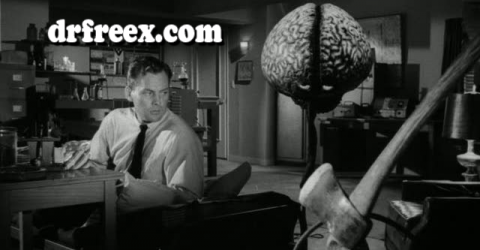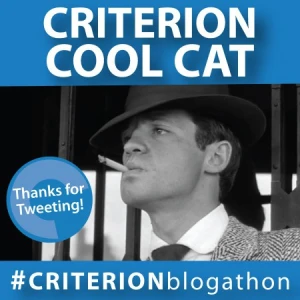 Click ^^ for Hubrisween Central, here for our Letterboxd page.
Click ^^ for Hubrisween Central, here for our Letterboxd page.
 When one is doing a challenge like Hubrisween, it behooves one to occasionally program oneself a softball. So let’s all say “Hello!” to our designated softball, the 1920 Harold Lloyd short, Haunted Spooks.
When one is doing a challenge like Hubrisween, it behooves one to occasionally program oneself a softball. So let’s all say “Hello!” to our designated softball, the 1920 Harold Lloyd short, Haunted Spooks.
By 1920, after numerous shorts for the Hal Roach studios, Lloyd was finally beginning to find his own voice. He had cast off the imitation of other, successful stars, donned a pair of glasses with no lenses, and became the character that would be known and loved for years: honest, earnest, kinetic, and extremely physical.
Haunted Spooks is pointed to as the first of Lloyd’s mature works. And true to Lloyd’s character and future works, it damn near killed him.
The plot is somewhat complex for a two-reeler. First, there is some Southern gentlemen who has passed away and left his plantation to his only daughter, on the stipulation that she live there with her husband for a year. If she fails this, the mansion goes to her evil uncle (the will doesn’t say “evil uncle”, but you know what I mean). The problem is, she’s not married.
 Switch to Harold Lloyd, who is one of many young men wooing a rich young lady. In a truly funny sequence, he manages to freeze out the most ardent of his rivals, and gain the father’s consent to marry her. After getting this permission, though, he finds his lady love in the arms of another man, and so spends the next five minutes unsuccessfully trying to commit suicide. No, wait, trust me, it’s really funny!
Switch to Harold Lloyd, who is one of many young men wooing a rich young lady. In a truly funny sequence, he manages to freeze out the most ardent of his rivals, and gain the father’s consent to marry her. After getting this permission, though, he finds his lady love in the arms of another man, and so spends the next five minutes unsuccessfully trying to commit suicide. No, wait, trust me, it’s really funny!
His final attempt, trying to get run over by a car, puts him in touch with the heiress’ lawyer (it’s his car), and within minutes, the lovelorn Lloyd is wed to The Girl (Mildred Davis, who in a few years would actually be Mrs. Harold Lloyd). They pile into her rattletrap Ford, and journey to their new home.
 Meantime, the Evil Uncle (Wallace Howe) is inspired by a thunderstorm to tell the superstitious staff that the mansion is haunted. Yes, the domestics are all black, so just steel yourselves for the Standard Comical Negroes of the time. Lloyd and the Girl arrive just in time to nearly get trampled by the stampeding servants, leaving only the petrified Butler (Blue Washington). Thereafter follow multiple people wearing sheets for various reasons, people running from them, and the occasional coating with flour to risible effect.
Meantime, the Evil Uncle (Wallace Howe) is inspired by a thunderstorm to tell the superstitious staff that the mansion is haunted. Yes, the domestics are all black, so just steel yourselves for the Standard Comical Negroes of the time. Lloyd and the Girl arrive just in time to nearly get trampled by the stampeding servants, leaving only the petrified Butler (Blue Washington). Thereafter follow multiple people wearing sheets for various reasons, people running from them, and the occasional coating with flour to risible effect.
The thing is, this is all hilarious, and must have been even moreso in 1920 when it was all relatively new (maybe?). The bits are well staged, frenetic, and even at this far remove, often unexpected and always humorous. And we can – and should – tut-tut at the racial stereotyping, but we must also admit that it is fairly forward-thinking when the formerly terrorized Butler is the one who discovers and completely exposes the subterfuge, giving Lloyd and The Girl their happy ending and one of the better closing lines, from The Girl: “By the way – what’s our name?”
So how did this amped-up yet scaled-down episode of Scooby-Doo nearly kill this promising young comic star? Turns out it wasn’t anything that actually happened during filming (and given later successes like Safety Last! is only logical to assume). It was, in fact, while shooting a publicity still. He was supposedly lighting a cigarette from a lit bomb fuse, and the supposed prop bomb actually exploded.
 No matter where I went in my research, I could not find the whys and wherefore of how Harold Lloyd was handed something that would actually blow up. That would seem to me a very interesting story, but I suppose it is amazing enough that Lloyd, having lost the thumb and forefinger of his right hand, his face severely burned and temporarily blinded, made such an astonishing comeback. He regained his vision and is using a prosthetic glove in the second half of the short. He is, in fact, using it so well that it is only apparent by its color (it’s lighter than Lloyd’s intact left hand) or by careful freeze-framing. Lloyd’s own doctors had to see the movie twice before they could determine when he was using it.
No matter where I went in my research, I could not find the whys and wherefore of how Harold Lloyd was handed something that would actually blow up. That would seem to me a very interesting story, but I suppose it is amazing enough that Lloyd, having lost the thumb and forefinger of his right hand, his face severely burned and temporarily blinded, made such an astonishing comeback. He regained his vision and is using a prosthetic glove in the second half of the short. He is, in fact, using it so well that it is only apparent by its color (it’s lighter than Lloyd’s intact left hand) or by careful freeze-framing. Lloyd’s own doctors had to see the movie twice before they could determine when he was using it.
So yes, Haunted Spooks doesn’t refer to the sheet-wearing Uncle or his accomplice, but to the terrified servants. That’s a shame. But it would also be a shame to let that discourage you from enjoying a particularly energetic gem from the silent era. I laughed more than I shook my head in sad disbelief. Here, let me make it easier for you:


